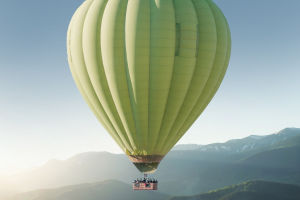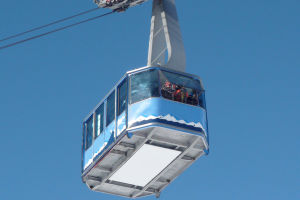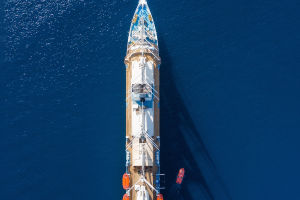Iceland has the largest and second-largest glacier in Europe, as well as a unique black glacier affected by volcanic ash.
Large glaciers, tundra, waterfalls left by glacial activities, glacial lakes with flowing ice floes, and beaches scattered with diamond-like ice blocks.
These breath-taking sceneries have become the best tourist promotion photos in Iceland. Let's take a look at the most worthwhile attractions in Iceland.
1. Geysers
The origin of Gays in English comes from "Geysir" in Icelandic. There are several geysers in the hot spring area here.
The most active of these is the Intermittent group of Strocurkur. Hot water up to 10-20 meters is pushed out every few minutes.
The groundwater is affected by geothermal heat, and when it passes through the earth's crust, it becomes countless when the steam pressure exceeds the water pressure, and the sound of "gurgling" will be heard.
At the same time, the water's surface rises, and then suddenly erupts, forming the geysers here.
2. Gullfoss Falls
Gullfoss Falls shines with golden light under the sunlight, so it is called "Gullfoss (Gold) Waterfall". The river water flowing from the glacier flows down with mist from the top of the lava.
In the 20th century, there was a famous incident here. Due to the abundant water here, there was a British company that wanted to build a hydroelectric power station here. Many young girls living nearby protested, and finally, the construction of the power station was terminated.
The waterfall, which changes with the shape of the lava, is full of life and presents a wonderful view. The length of the waterfall is 70 meters, and the drop is 30 meters.
3. Grovelling National Park
Known as the " Grovelling (Parliament Plain)", this area has an important place in Icelandic history. It was also here in 1944 that Iceland declared its independence.
The Mid-Atlantic Ridge passes here, and the Eurasian and North American plates also separate from here. Earthquakes and volcanic eruptions continue to occur so the terrain here is constantly changing. This is a very precious place on Earth where you can see the plates breaking.
4. Akureyri and Lake Miwadun
Akureyri, Iceland's second-largest city, is still preserved. The 18th-century architecture is a city worth slowly admiring. If time is not rich, you can go directly to Miwadun. There is also a huge waterfall on the way to the lake. Lake Miwadun means "Sea of Mosquitoes".
The deepest point is only 2 meters, which is very shallow, and because it is located on a lava plateau, it will not freeze even in winter. Just like his nickname "Sea of Mosquitoes", mosquitoes are everywhere in summer, so it also attracts many water birds.
In addition, it is also the largest colony of freshwater green algae in the world. Icelandair has 3-6 flights to Akureyri every day, which takes about 45 minutes. From here, there are sightseeing buses to Lake Miwadun every day.
5. Askja Volcano
Now that you have come to Lake Miwadun, you must visit Mount Askja. The lava platform of Askja Volcano, once hypothesized by NASA to be the surface of the moon, trains astronauts here. Incredible sights can be seen everywhere.
6. Blue Lagoon
This is the largest open-air bath in the world, and it is also a good place to observe the aurora. If you come here, you can choose accommodation around it the day before, and if you are lucky, you might have a great night.
In addition, the skin care products sold here are also good gifts, you can visit the store here. The Blue Lagoon is a hot spring built by using the hot water generated by the geothermal power station. You can see the power station nearby and you can visit it.


